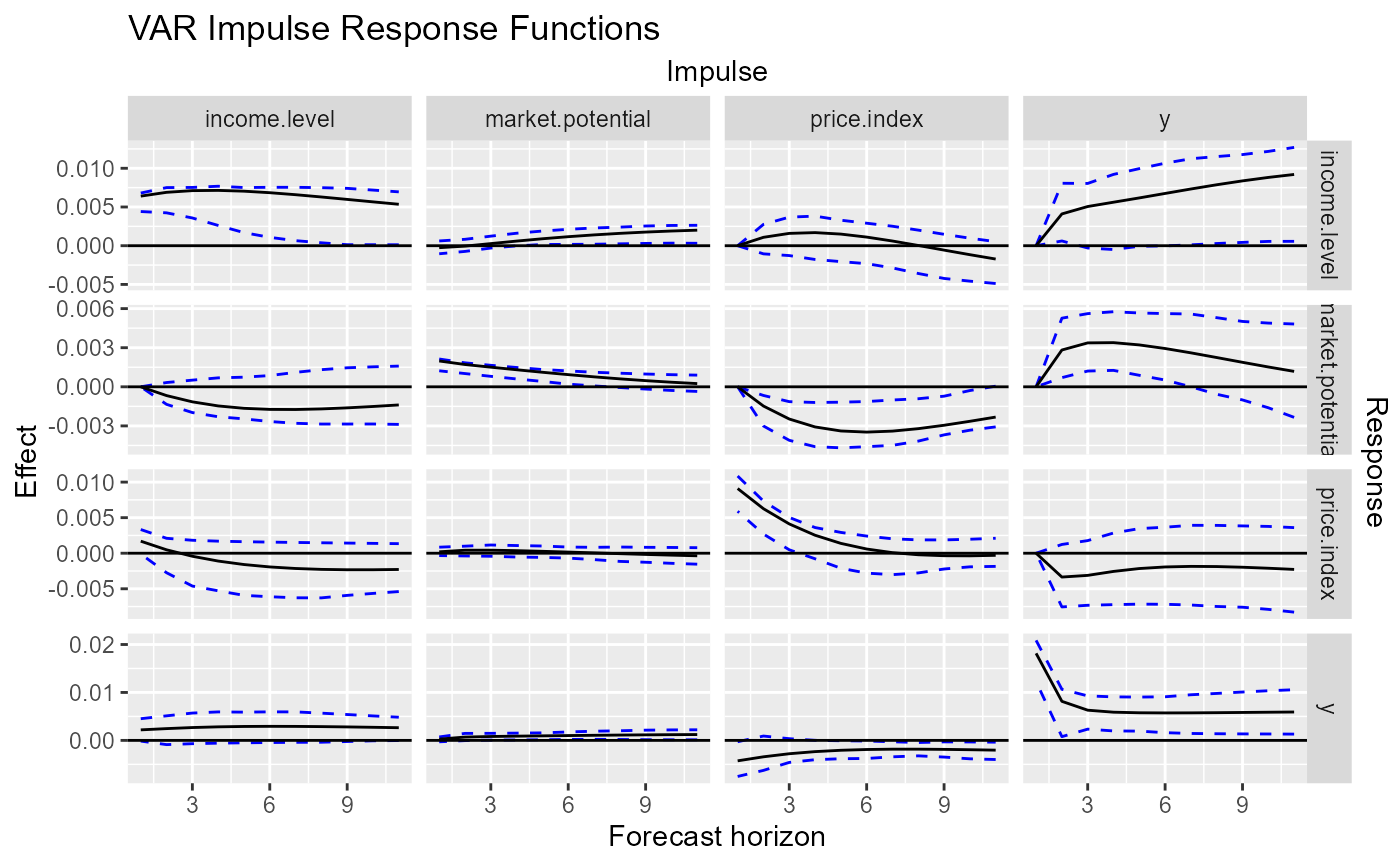Plots the result of a irf call.
Arguments
- x
A "varest" object to pass to irf, or, directly, a "varirf" object.
- series_imp
A character vector with variables to consider for the impulses. Defaults to all (
NULL).- series_resp
A character vector with variables to consider for the responses. Defaults to all (
NULL).- n.ahead
An integer. The size of the forecast horizon, passed to irf. Unused if
xis of class varirf.- ci
The confidence level for the confidence interval. Set to
FALSEto omit. Used in irf.- args_line, args_hline, args_ribbon
Additional arguments passed to geom_line, geom_hline, and geom_ribbon (respectively). See more in the 'Customization' section.
- args_labs
Additional arguments passed to labs. If an empty list, will be changed to default values.
- args_facet
Additional arguments passed to the faceting engine used.
- facet_type
The facet 'engine' to be used.
'ggplot2'for ggplot2::facet_grid,'ggh4x'for ggh4x::facet_grid2.- ...
Arguments passed to methods, see the 'Methods' section.
Value
A ggplot.
Details
Customization
The graph can be customized both with the 'static' arguments passed to each layer – using the args_* arguments –, and, if applicable, the 'dynamic' aesthetics – using the args_aes argument.
After built, the result can be further customized as any ggplot, adding or overwriting layers with the ggplot's +. It is useful to understand the data and the mappings coded by the package, using the function get_gg_info.
See vignette('customizing-graphs') for more details.
Methods
The data from x is extracted with the generic function texts_vec. Each class conditions an external function to pass the ... arguments to. Below there is a list with all the currently implemented classes:
Class
'varest': passed to vars::irf.Class
'varirf': passed to nothing.
See also
Other VAR output plots:
ggvar_fevd()
